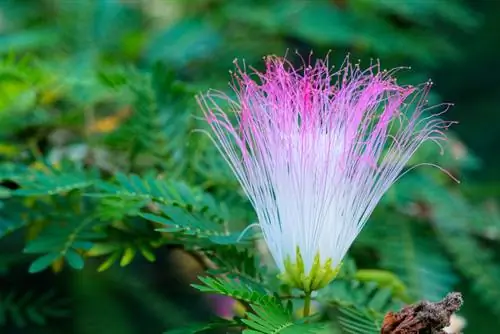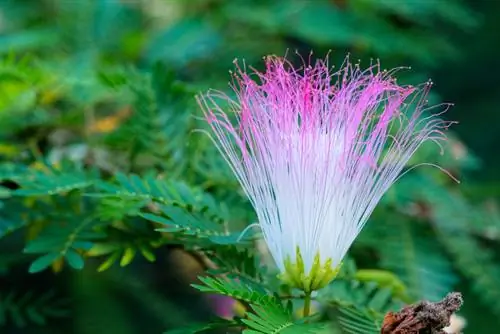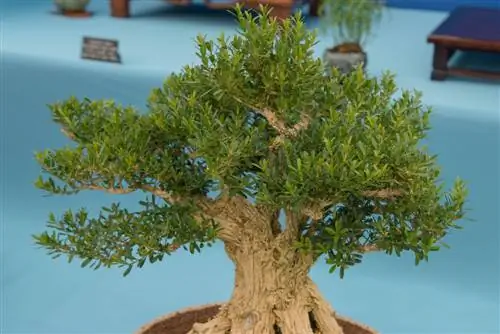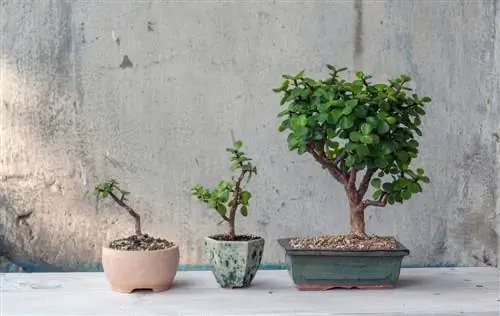- Author admin [email protected].
- Public 2023-12-16 16:46.
- Last modified 2025-01-23 11:21.
Mimosa plants are not necessarily the most suitable plants for growing as bonsai. Mimosa is very sensitive and quickly takes offense at incorrect treatment. However, if you have enough experience in growing bonsai, you can give it a try.

Are mimosas suitable for growing bonsai?
Mimosa plants are rather unsuitable as bonsai because they are sensitive and require a lot of care. Cutting is poorly tolerated and the root ball should neither dry out nor be too wet. Experience in bonsai care is helpful for successful mimosa bonsai cultivation.
Mimosa doesn't grow very high
In general, mimosas - unlike trees or other houseplants that are grown as bonsai - do not grow very tall. They reach a maximum size of 50 centimeters.
Bonsai mimosas are therefore very small plants that need a good location to be effective.
Since mimosas are already very sensitive and do not react well to small care errors or incorrect locations, it is not worth it for beginners to grow a mimosa as a bonsai. At best, experienced gardeners who can meet all care and location requirements should attempt this experiment.
A mimosa does not tolerate cutting well
A big problem with keeping a mimosa as a bonsai is that the plant does not tolerate being cut well. In the first year it may not be shortened at all.
Pruning can be done from the second year onwards, but only carefully. The branches can be cut directly on the trunk. Wiring is not successful with mimosas.
So that the mimosa remains small, it must be repotted regularly. The roots can be trimmed.
Care properly for mimosa as a bonsai
- Watering correctly
- fertilize occasionally
- prune annually
- repotting
When watering mimosa as a bonsai, make sure that the root ball neither dries out completely nor is too wet. Watering is only carried out when the upper layer of the soil has dried out.
Cocohum (€2.00 on Amazon) is recommended as a substrate, as it contains no nutrients and the mimosa grows slower. To do this, the plant must be fertilized regularly.
The mimosa overwinters at warm temperatures between 18 and 22 degrees. It must be in a bright location, but should only receive direct sun in the morning and evening. The humidity may need to be increased.
Tip
When repotting a mimosa, make sure the new pot is not much larger than the old one. Mimosa flowers only bloom particularly beautifully when the root ball is somewhat limited.






